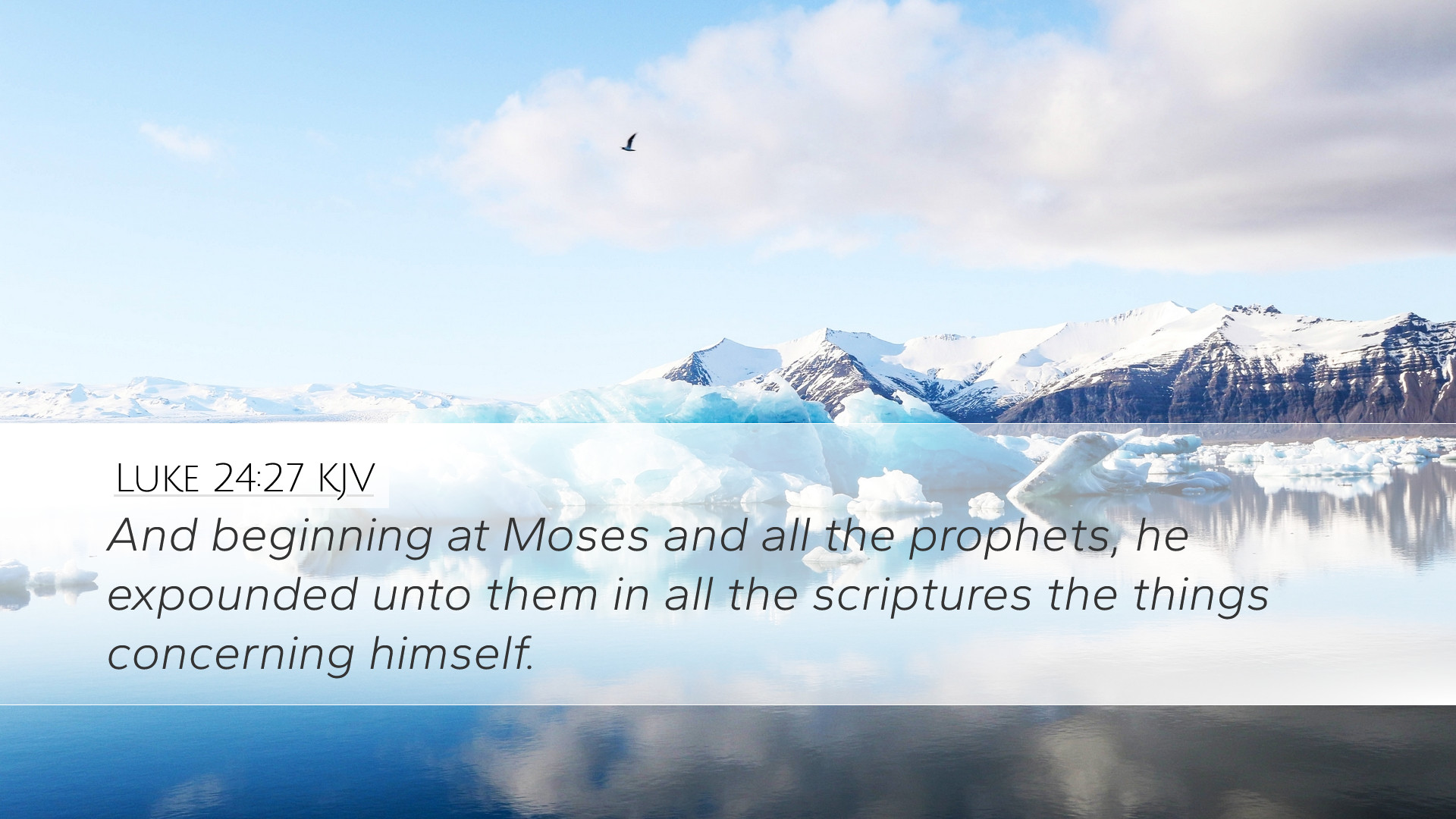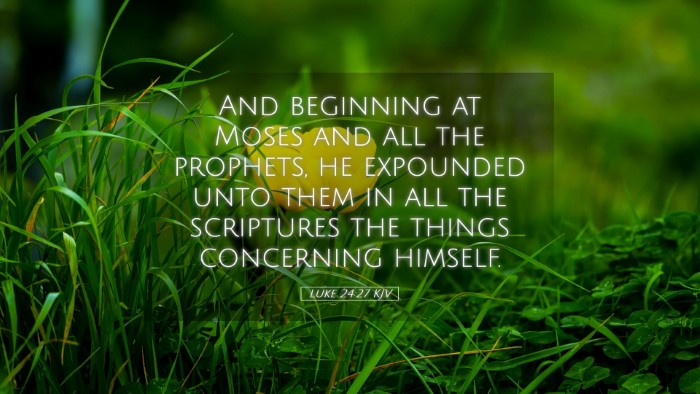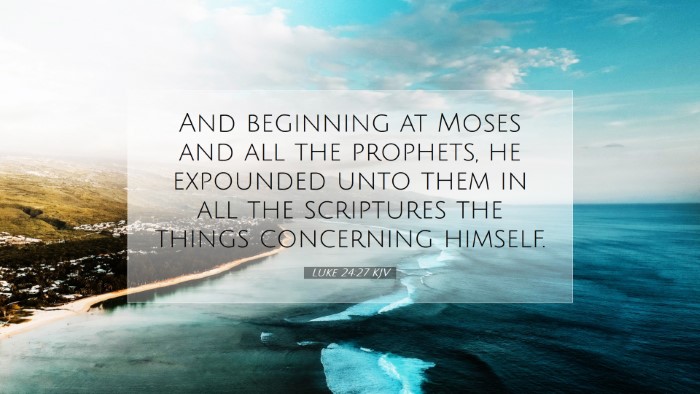Commentary on Luke 24:27
Bible Verse: "And beginning at Moses and all the prophets, He expounded unto them in all the scriptures the things concerning Himself." - Luke 24:27
Introduction
This verse is a profound moment in the post-resurrection narrative, where Jesus, walking with two disciples on the road to Emmaus, reveals the fullness of the Scriptures. It highlights how the Old Testament points to Christ, a theme echoed throughout biblical theology.
Historical Context
The setting of Luke 24:27 is significant as it occurs on the very day of Jesus’ resurrection. The two disciples are disheartened, speaking about the recent events in Jerusalem, unaware they are in the presence of the risen Christ. This interaction provides a rich context for understanding how Jesus interprets Scripture through the lens of His redemptive mission.
Insights from Public Domain Commentaries
-
Matthew Henry:
Henry emphasizes that Jesus' method of instruction—beginning at Moses—indicates the continuity of God's redemptive plan throughout Scripture. He points out that the Law (given through Moses) and the Prophets collectively testify of Christ. Henry notes that this manner of exposition is crucial as it affirms the importance of the Old Testament in understanding the New Testament, suggesting that every part of Scripture bears witness to Christ.
-
Albert Barnes:
Barnes elaborates on the significance of "beginning at Moses." He argues that the concept embodies the foundation of the Christian faith as it ties the gospel back to its roots in the Old Testament. He explains that Moses represents the Law and the historical narratives of Israel, and through his writings, Jesus shows how the Messiah was foreshadowed in various types, sacrifices, and prophetic declarations. Barnes concludes that this exposition was meant to show the disciples that their understanding of the Scriptures needed to be radically redefined in light of the events they witnessed.
-
Adam Clarke:
Clarke provides a detailed examination of the term "expounded." He notes that Jesus did not merely quote the Scriptures but offered a deep and comprehensive interpretation, indicating the need for spiritual insight to recognize the Messiah in the text. Clarke highlights key figures and events in the Old Testament, arguing that they are shadows pointing to the true substance found in Christ. He reinforces the idea that the entire narrative of Scripture—from Genesis to Malachi—ultimately seeks to reveal God’s plan for salvation through Jesus.
Theological Implications
This verse raises essential theological questions regarding the unity of Scripture and its Christological focus. By beginning with Moses, Jesus affirms that all scripture is God-breathed and profitable (2 Timothy 3:16). Post-resurrection, the understanding that Jesus provides is a paradigm shift; His life, death, and resurrection fulfill the covenant promises and prophetic words that were laid out throughout the ages.
Christocentric Interpretation
-
Unity of Scripture:
As noted by all commentators, the understanding that the entirety of Scripture is interwoven with the narrative of Christ reinforces the doctrine of inspiration and inerrancy. This unity requires scholars and ministers alike to approach the Old Testament not merely as historical documents but as vital pieces revealing Christ's nature and mission.
-
Hermeneutical Approach:
There is a critical need for a Christocentric approach to biblical interpretation. Each book and chapter can be examined for its witness to Christ. It is essential for theologians to equip themselves with tools to draw connections between the Testaments, thereby enriching the understanding of salvation history.
Practical Applications
-
For Pastors:
Pastors are encouraged to preach with this integrative lens in mind, linking the Old and New Testaments. On a practical level, sermon series could be designed to elucidate how specific texts in the Old Testament point to Christ, demonstrating the seamless narrative of grace and redemption.
-
For Students and Scholars:
The necessity of engaging in deeper studies that focus on typology, prophecy, and the fulfillment of Christ can enhance theological education. Students should be encouraged to employ both historical-critical and theological methods of analysis.
Conclusion
Luke 24:27 serves as a vital reminder of Scripture's cohesive narrative, calling believers to see Christ in every text. Resurrected and glorified, Jesus illuminates the Scriptures, offering insights that transform despair into hope and confusion into clarity. This message is timeless, urging the faithful to delve deeper into the Word and acknowledge the relentless pursuit of God through His written revelation.


